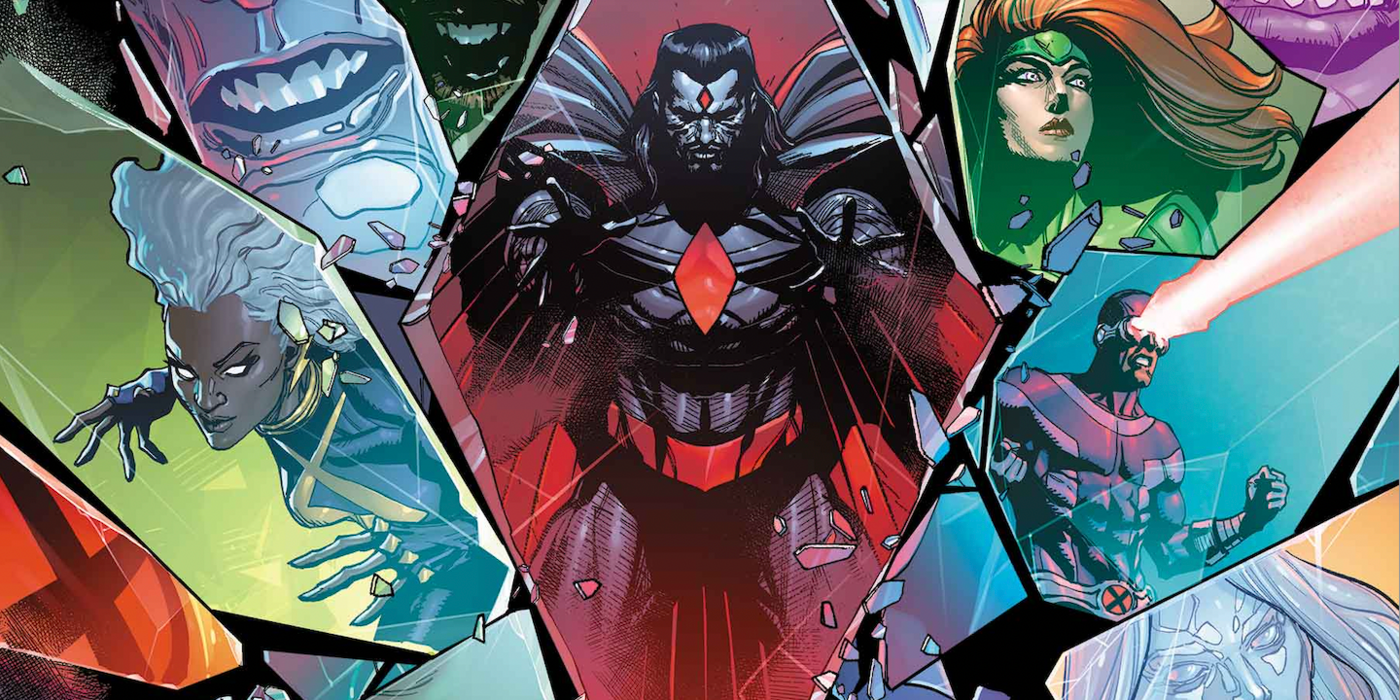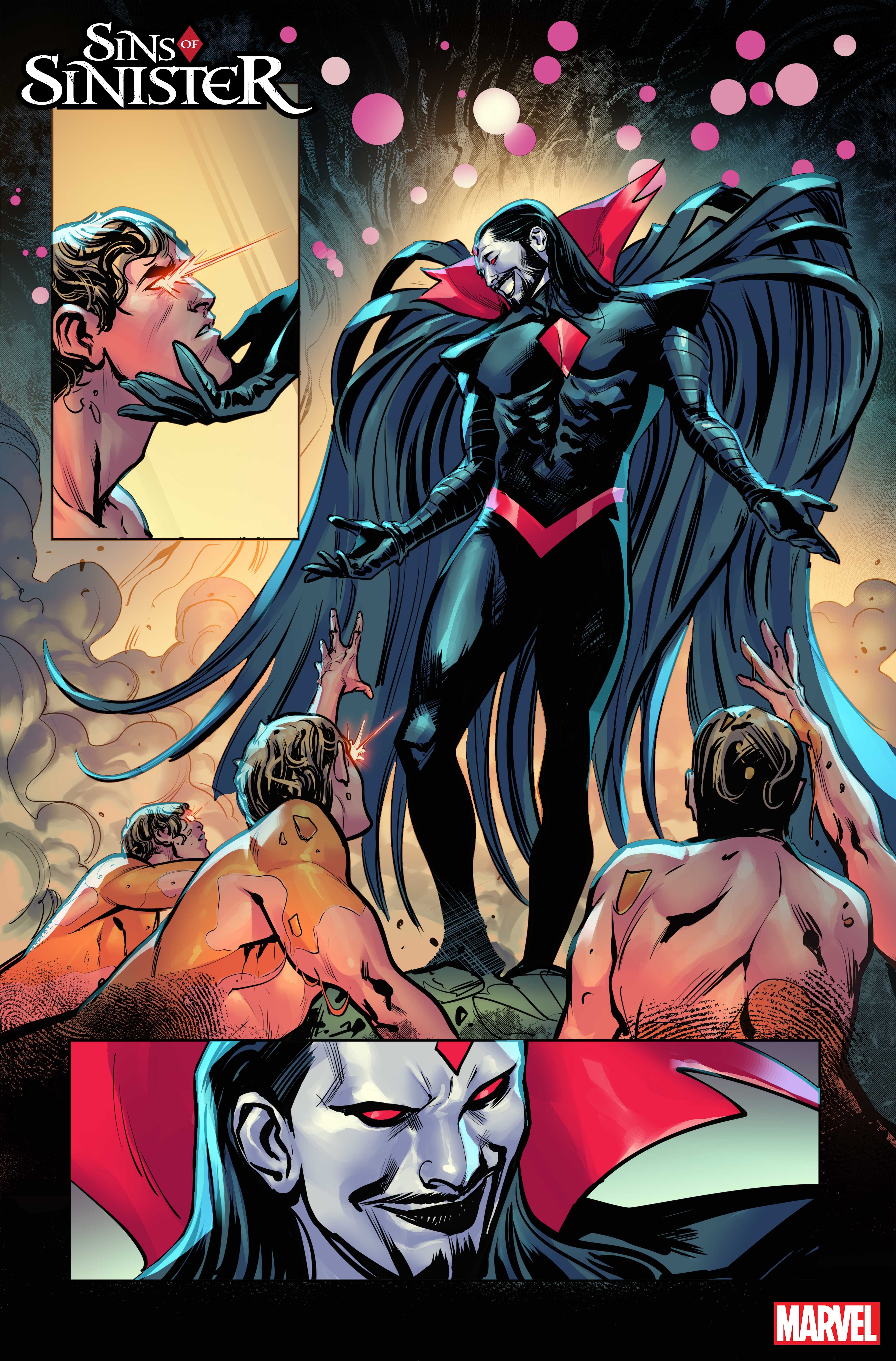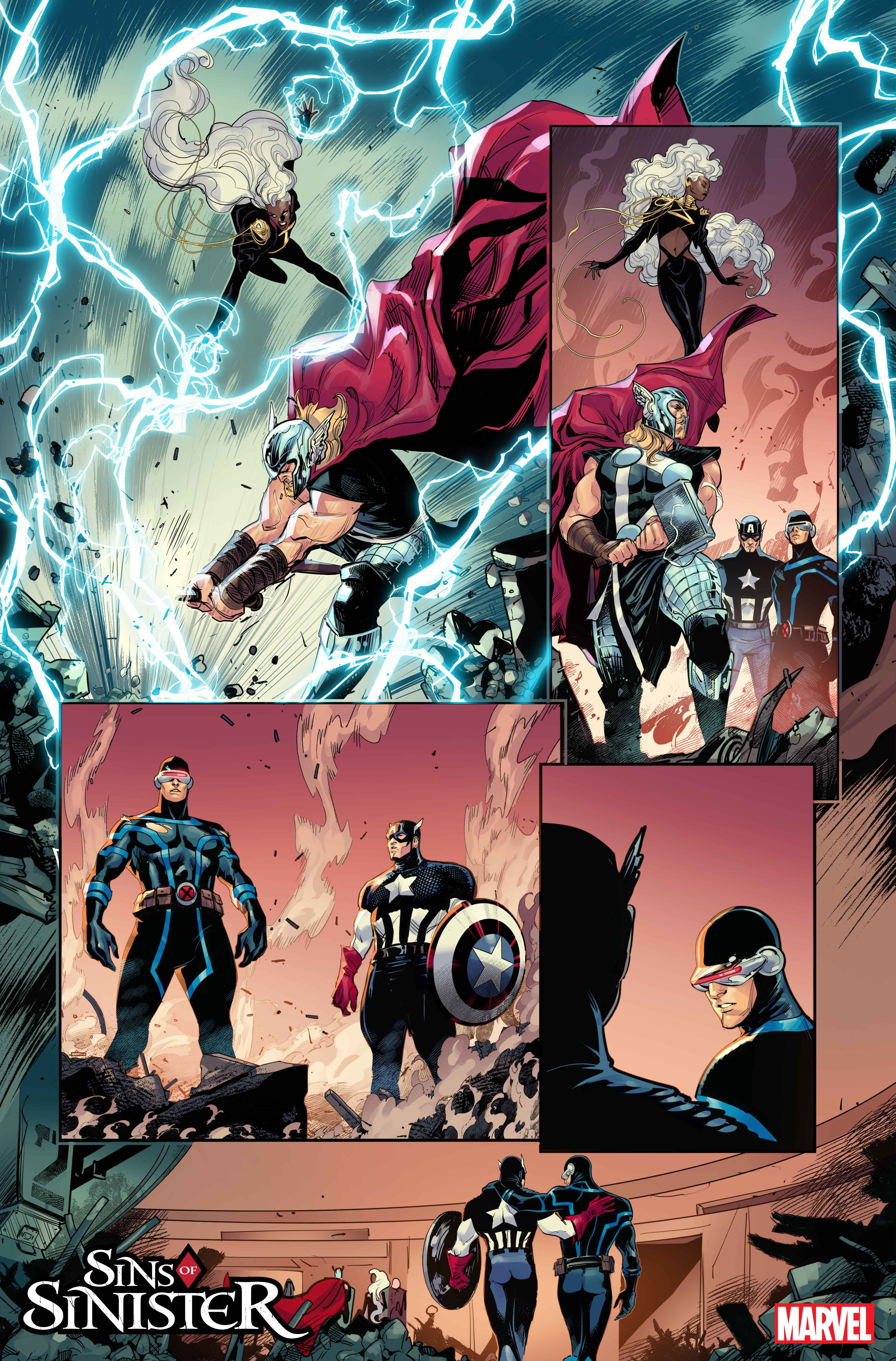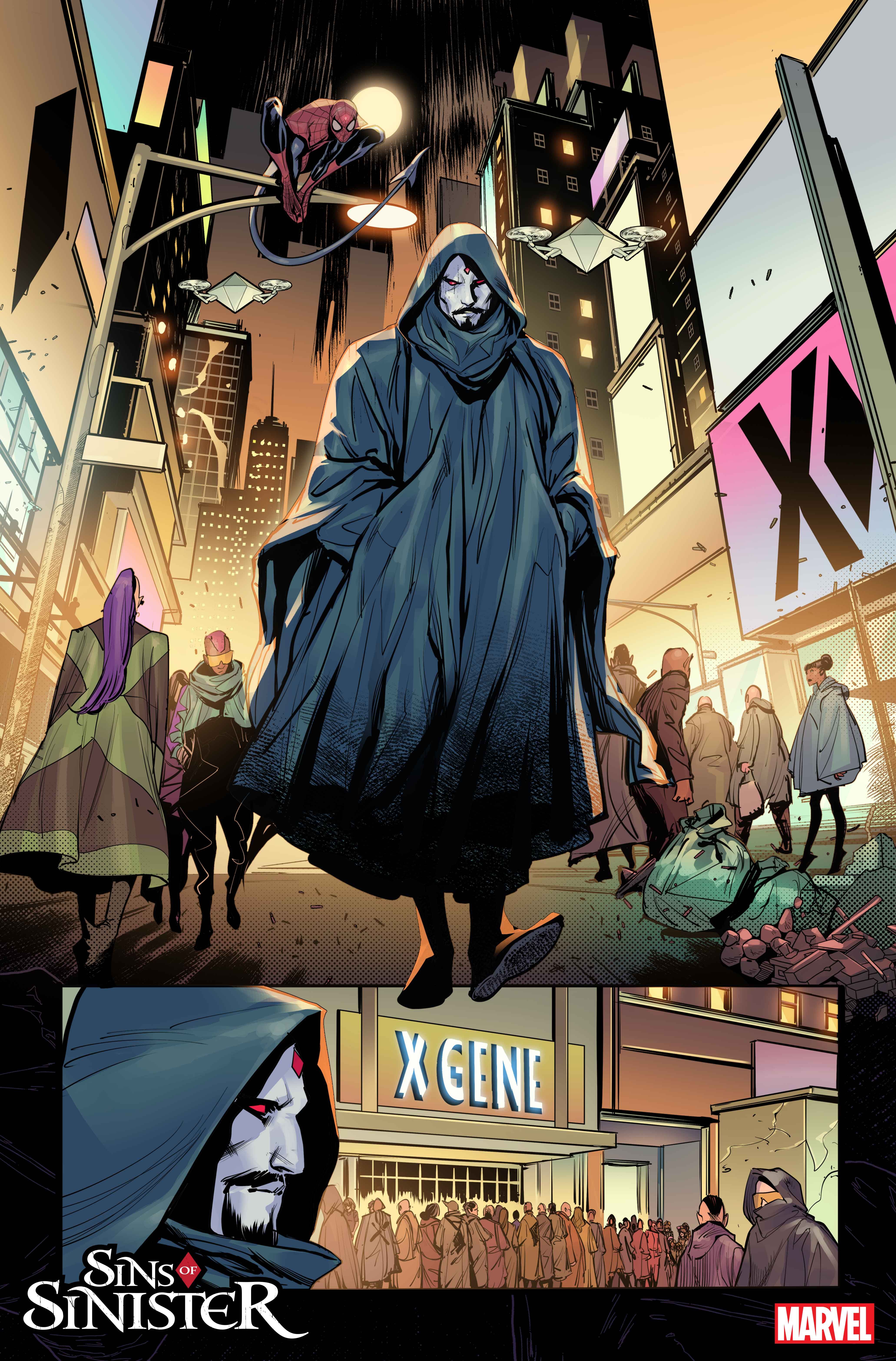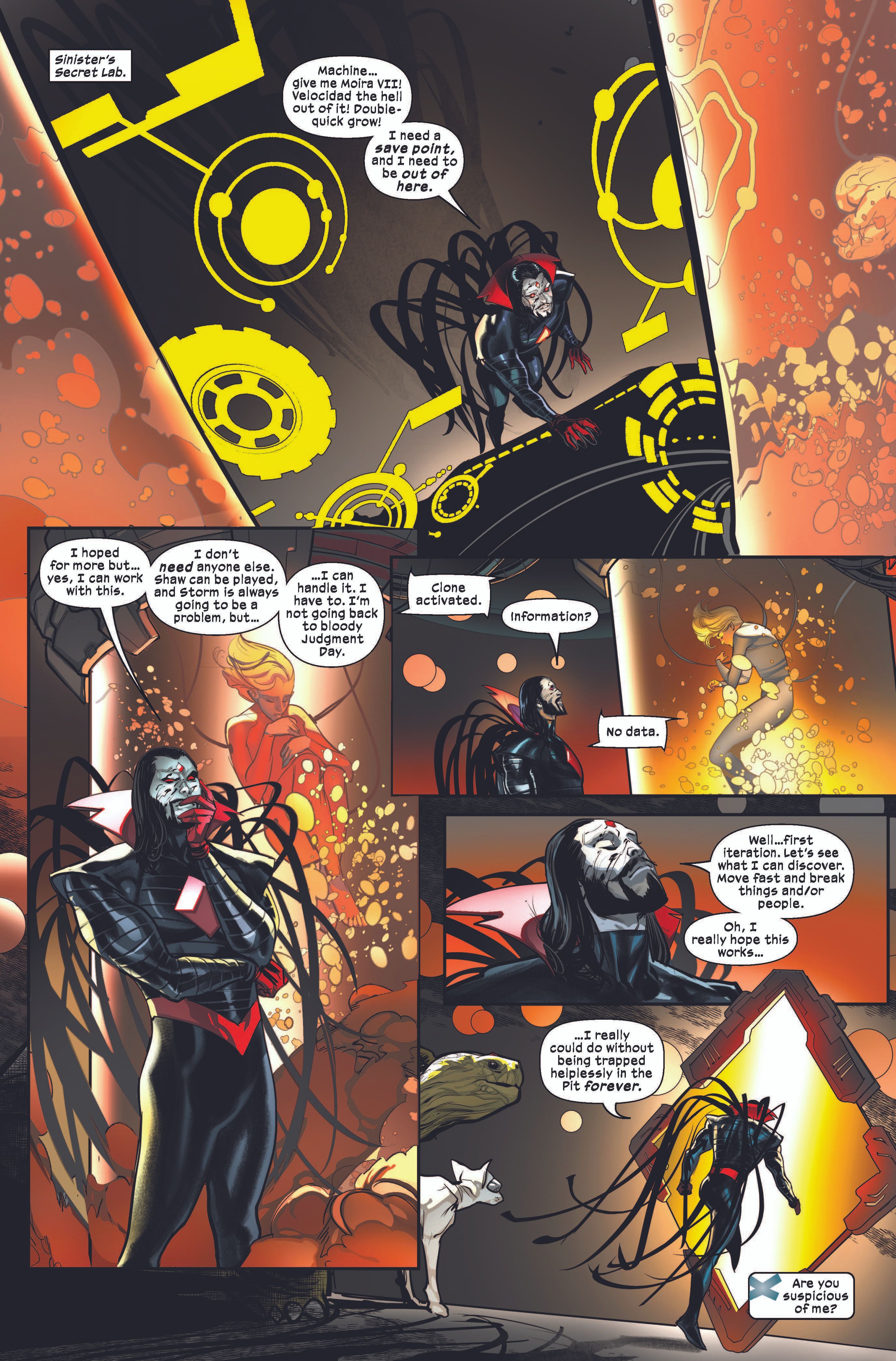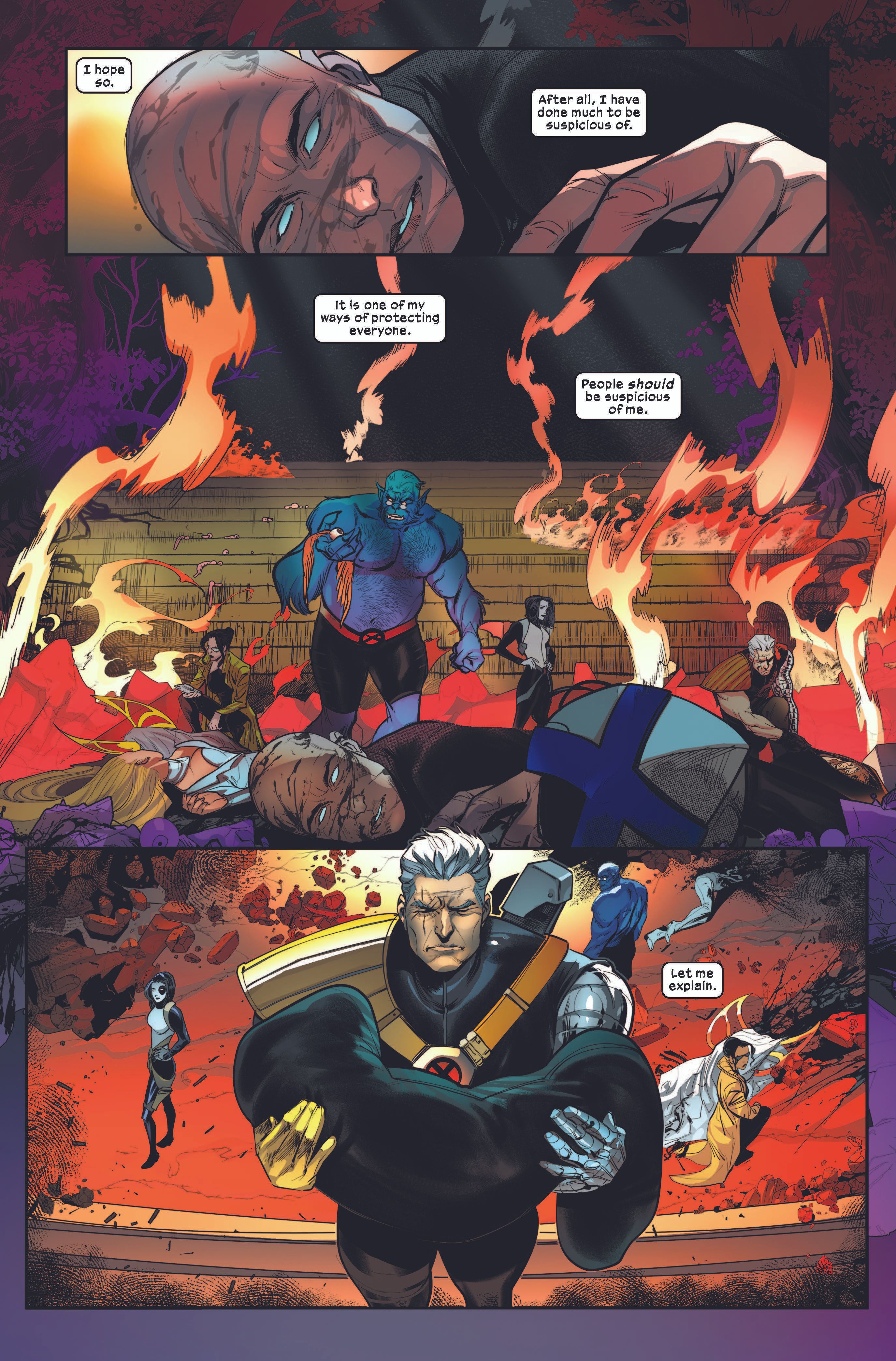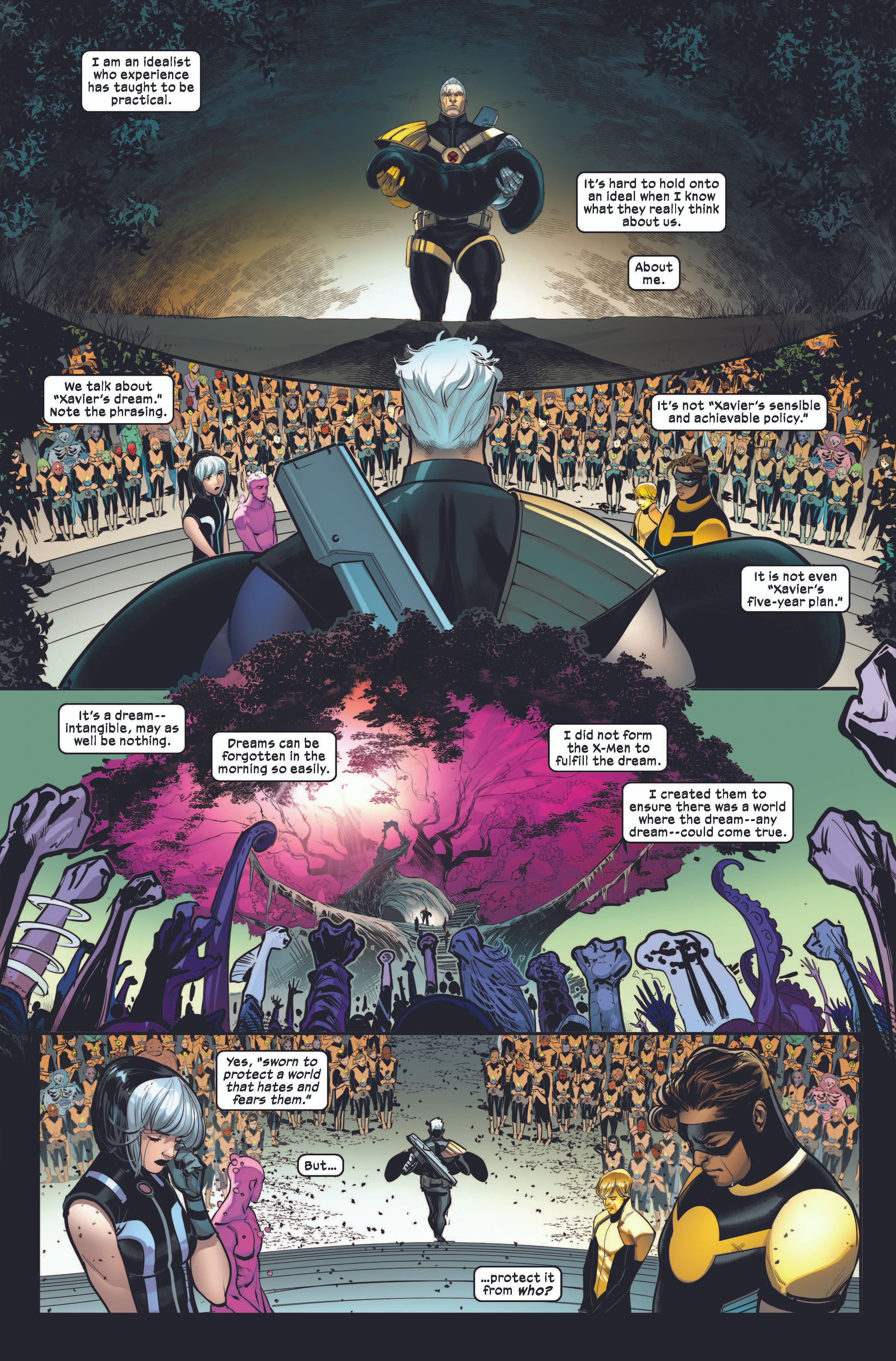When the mutant nation of Krakoa was founded, the amoral and megalomaniacal geneticist, Mister Sinister, tried a different tactic in his longtime battle against the X-Men. He became one of them. Not only that, but the X-gene-positive Sinister joined Krakoa's governing body, the Quiet Council. He's enjoyed the power and privilege his position offers, but it's also brought him complications. The recently launched Immortal X-Men series by writer Kieron Gillen and artist Lucas Werneck has documented some of these troubles, including an adversarial relationship with Destiny and the fact that there may be other Sinisters out there with equally lofty goals.
All those troubles come to a head in January's Sins of Sinister #1, a one-shot from Gillen and Werneck that finds the titular character getting everything they wished for and threatens to change the Marvel Universe in fundamental and nightmarish ways. From there, the action heads into three issues of Immortal X-Men, the Al Ewing-written X-Men Red, and the Simon Spurrier-penned Legion of X. Gillen, Ewing, and Spurrier will each write these titles. But for the duration of the Sins of Sinister event, Gillen's book will be immoral X-Men, Ewing's title will become Storm and the Brotherhood, and Spurrier's series is titled Nightcrawlers. CBR spoke with Gillen about the event, its titular character, the dark future it explores, and how it impacts the present. Gillen and Marvel also shared a preview of Werneck's art for Sins of Sinister #1 and an exclusive look at his work for Immortal X-Men #10.
CBR: What was it about Mister Sinister that made him such a fascinating character to write? And what is it about him that makes him such an appealing character to feature in event books like the recent Judgment Day and the upcoming Sins of Sinister?
Kieron Gillen: When I reinvented Sinister in my first Uncanny X-Men run, I sat down and thought, "How can I make this guy work in the twenty-first century?" I thought we could turn up the volume on a lot of the stuff that was there before; his over-the-top genetic manipulation and the sheer camp, glam-rock nature of the character. Let's turn up the volume on those aspects, but let's also take the stuff that's there but has never really been made explicit, like his history and origins as a nineteenth-century scientist. Seeing all that through the prism of the time period led to the thinking that he takes genetic material because he believes he can make better use of it – a genetic imperialist.
Sinister is also a really useful example of a bad-faith actor in Krakoa. That's part of what's interesting about him now. Having someone as bad as Sinister on the Quiet Council is a reminder of the deal they made to have all of this.
Another part of my interest is his connection to Destiny. When I started thinking about Immortal X-Men, I knew there was a thing between Sinister and Destiny in the same vein as Moira and Charles.
His other appeal is he's such an entertaining scumbag. He's fun to watch, but I can't wait for him to fall. My wife Chrissy was in another room listening to me talk about Sinister for another interview in these terms. She said, "He's basically Frasier, isn't he?" He's this over-intellectual, foppish character who is eventually going to fall on his face. If you look back at that first Immortal issue I did with Sinister, my favorite bit is where he thinks he's so smart, and Destiny says something he wasn't expecting. He spends the rest of the page going, "Crap! Crap! Crap!" [Laughs] That's the way I like Sinister; panicking.
In the recently concluded AXE: Judgment Day event Sinister helped create a god that nearly destroyed the Earth. What do you think he took from the experience of building and defeating that creation?
Probably, "I don't want to do that again!" [Laughs] Also, in Issue #9, you get that he's such a creature of petty pride. The bit that really sticks with him is he didn't get judged. It's a "Someone is wrong on the internet" annoyance. It's like, "I should be better than this, but I'm not."
That's the main thing he takes from it. [Laughs] There are a lot of big questions about how Krakoa responded to things in AXE that we bring to the fore, but for him, it's, "I don't want to do that again." And two, the nagging question of, "Why wasn't I judged?" That links to Doctor Stasis and the other two Sinisters. He's wondering, "Wait… were they judged?" [Laughs]
So he's got a huge ego and has to compete with versions of himself that are just as egotistical?
Oh yeah, ego is at the heart of Sinister. I did a line with him in Loki [in A+X #5] where Loki states Reed Richards is the smartest man alive. Sinister is like, "No he's not!" Before he can continue his conversation with Loki, he has to state that he's the real genius.
So, the pettiness is part of the appeal of writing Sinister despite the fact that he clearly thinks he's above it all. He's not, though. [Laughs]
They're set in two different time periods, but I feel like Immortal X-Men #8-9 are laying the foundations for Sins of Sinister. Is that correct?
Issue #8 is very much in the past. It's partly reestablishing and partly giving things a new spin. It's like, "If you did know this, let's show you something else" and show more of our hand, no pun intended, no really.
We've shown there are two Sinisters which has people wondering, "Are there any more?" Even Sinister is like, "Come on. If one is a diamond, and another is a club, there are implications!"
Issues #9-10 are the present day. They're Sinister's response to Judgment Day and the fallout. It gets messy. In #10, Sinister gets his just deserts by being thrown in the hole. There's a sense of punishment that sets up Sins of Sinister. From there, in 10 years' time, Sinister is in charge of the Marvel Universe. The question is, how? [Laughs]
What inspired this story?
The basic idea behind this is a Moira MacTaggert-style reset. Let's follow a timeline and go forward. That's what Sins of Sinister is. It's a chain of events that starts with Sinister being thrown in the pit and goes forward for a thousand years. So it's a thousand-year history.
We've been playing around with the Moira resets as a plot device for a while. So, we're going to do one. We're going to show how everything goes completely out of control.
Can you talk about how Sinister being thrown in the pit ripples out and changes the Marvel Universe?
Sinister gets thrown in the pit at the end of issue #10. In Sins of Sinister #1, we pick up shortly after and show what happens and how the world changes. It leads to a situation that's really out of control. We're riffing on Powers of X with this story, so there are three time periods. The first three issues are the event +10 years. The next three issues are +100, and the final three issues are +1000.
Me, Al [Ewing], and Si [Spurrier] each do one issue in each time period. Then we skip forward to the next one. Each time period also has its own artist. So, they've got their own vibe. The +10 period I describe as near-future cyberpunk. So it's not overt control yet, but things are pretty creepy. +100 I describe as evil Star Trek. The mutant empire is now multi-planetary, is heading out into space, and is at war. Then +1000 years is hell. [Laughs] It's the operatic, gothic vibe of Warhammer 40,000. Imagine all the experiments have gone out of control.
+10 is like, "Oh, we're doing experiments." +100 is, "Oh . . . those experiments? They've blown up the test tube." Then +1000 is like the experiments have covered the lab with goo. That's the vibe, and you get all of these characters in this universe surviving or not.
This story is also an extension of the three books involved. In issue #8 of Immortal, we showed you there was a plan in place, and this is where we start showing the cards. Who are the other two Sinisters? What do they do? What do they want? Why do they want this? What's Destiny up to? That's the weird thing; Destiny is almost the hero of my book, but you don't know what her plan is. You'll know what the villain's plan is, though.
Fans are really into Omega level mutants; this idea of the top level power. I'm interested in the horror shows we can get from that. Because for me, the real heart of what I did with Sinister was he looks at Mutants as objects and works out what a power can do if it's disconnected [from] a person. That's horrific! It's literal objectification.
Magneto and Xavier say, "Oh, you're special because you're a mutant." Sinister agrees. He thinks the only thing that's special about you is that mutant bit of you. Any bit of humanity around doesn't matter. All you are is your gift. That's creepy! [Laughs] But it's kind of what Krakoa believes as well. To come to Krakoa, you need an X-gene. Nothing else matters. The good side of the place is circuits -- the idea of mutants working together. Sinister's awful philosophy, which led to his Chimera, is basically that. They're completely different things, but at the same time, they're also the same thing. Those awful questions and ideas interest me.
What else can you tell us about Immoral X-Men?
It's about the continuing adventures of the Quiet Council into the far future and the political battles between the members. Can they defeat Sinister? What sorts of push and pull are between them? That's the vibe, and obviously, the pun title of Immoral X-Men was a joke I had right in my first pitch document. It's a joke but also highly descriptive of the book.
So, the characters I've set up are the ones who will carry on into Immoral. Those with big roles in Immortal have big roles in Immoral. Perhaps, what's most interesting are the new characters. We show Rasputin IV from Powers of X in our teaser. I reintroduce her into the mix.
So, this may be a crossover, but these are still the stories we set in motion. The other key thing is it impacts the present day. This may be a different timeline, but the stuff that is brought back is meaningful. I've started writing the issue of Immortal X-Men where we come back. It's fun. We come back to a really interesting political situation.
It's interesting that the British contingent of the X-Office is handling the three Sins of Sinister titles.
This is a story with a real Brit energy. There's something really 2000 AD about this in that it's an awful, petrifying, and horrific situation, but it's also very funny at times. It leans into those two modes.
Finally, Sins of Sinister features pairs you with some great artists. Lucas Werneck kicks things off with the Sins of Sinister Special. Paco Medina does the +10 issues of all three books. Andrea Di Vito does the +100 issues, and Alessandro Vitti does the +1000 books. What's it like collaborating with them?
Sins of Sinister builds straight off of Immortal X-Men #10. So, Lucas comes in and gives his glamorous approach to the book. It's fantastic and works perfectly. He makes you feel like it's a continuation of the scenes from #10. It's very smooth and gives him a chance to draw the whole Marvel Universe -- he does great Avengers, for example.
This is a big event book which means we can bring in characters outside of the X-Men. I got to do a J. Jonah Jameson story! We show you how the whole Marvel Universe is going wrong, which is a lot of fun.
The first issue isn't just Lucas, either. We've got 10 guest pages done by a murderers' row of talent. They're doing these single pages of big events that happened. So we've got our story, and part of that story is what happened to the Avengers, The Fantastic Four, and really anybody. Here's a clue; it's not good. [Laughs]
Paco is a great superhero artist. So, his work has this real superhero energy to it. I said it was near-future cyberpunk, but the glam aesthetic would be normal, at that time. It's the Marvel Universe a little ways in the future! Sure the streets are full of death smog, but don't worry about that! It's that kind of vibe.
Andrea does big science fiction energy. It's like Starship Troopers. Everyone is wearing shiny uniforms, but there's lots of questionable behavior and outright oppression. It looks pretty, but its heart is an abyss.
Alessandro perfectly delivers the mess of the +1000 time period. We tasked him with imagining and realizing what would be done with these mutant powers if everything was off the hook. I said to him, "Disturb us." That's the aim of +1000.
So a real David Cronenberg vibe?
Oh yeah! There are definitely Cronenbergian elements.
Then for our Omega issue, Paco returns for the end of that timeline, and Lucas comes back for our return to the present.
I think this will be fun for everyone. It's really tight. It moves. It's full of ideas, and it's got moments that will have people saying, "Remember when . . ." It also introduces some new characters. Some we've met, like Rasputin. Other's we haven't, and let me tell you, Jon Ironfire is a hell of a character! I was writing him in the Omega issue, and that guy has legs! Plus, this story will change the present! It's simultaneously influenced by some great things the X-office has done before, like Age of Apocalypse and Powers of X, but it also absolutely finds its way. The hard thing is you can't talk about how it's its own thing. I can't tell you about Sins of Sinister. You must experience it and buy it if you want. [Laughs] I'd like it if you did.
Sins of Sinister #1 is due out on Jan. 25.

